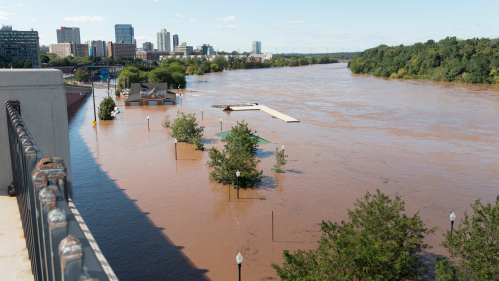New Jersey’s Temperatures Rise by 4 Degrees Fahrenheit, Twice the Global Average Since 1900

Heavy rainfall, flooding, increasing heat waves and heat-related illness are likely to become more common in New Jersey by 2100, according to a report by researchers from Rutgers University-New Brunswick, the Office of the New Jersey State Climatologist and the University of Delaware.
State of the Climate: New Jersey 2021 is an annual overview for state and local decision-makers, hazard planning and climate resilience professionals and residents that summarizes the current scientific information on climate trends and projections to help prepare for future impacts.
According to the data, temperatures have been climbing at a faster rate in recent decades in New Jersey. The mid-Atlantic region is one of the most rapidly warming locations in the U.S. This trend is expected to accelerate with further climate change.
“In 2021, we experienced the 3rd warmest year on record in New Jersey and our annual temperatures have increased by about 4 degrees Fahrenheit since 1900, roughly twice the global average,” David Robinson, a Distinguished Professor at Rutgers and state climatologist, said.
With moderate greenhouse gas emissions continuing throughout the century, annual temperatures are projected to increase by 5 to 8 degrees Fahrenheit above preindustrial levels by 2021. With high emissions, temperatures could increase by as much as 8 to 14 degrees Fahrenheit. Rising temperatures increase the likelihood of heat waves and heat-related illness for New Jersey’s citizens.
In tandem with rising temperatures, sea level has also risen by about 18 inches in Atlantic City since the early 1900s, and by 2050 is projected to rise 11 inches to 2.1 feet above 2000 conditions. By 2100, this shift will make our coastal storms more destructive and “sunny day flooding” in tidal areas occur most of the year during high tides, even with moderate greenhouse gas emissions.
The year 2021 may provide a glimpse of what a changing climate will look like, according to the report. The year was marked by extreme rainfall such as post-tropical cyclone Ida, which brought torrential rains and flooding. Flooding from Ida killed 30 people, the second greatest loss of life in New Jersey because of a natural disaster on record (the first being post-tropical storm Sandy in 2012). By the end of the century, extreme rainfall is projected to intensify, leading to even greater flooding.
“A warming climate has led to increased temperature extremes, sea level, and rainfall intensity within New Jersey,” said James Shope, an applied climatologist with the New Jersey Climate Change Resource Center at Rutgers and lead author of the report. “These changes will continue. Our report provides yearly updated information and context for how climate change hazards can affect human health, ecosystems, agricultural production, and more in New Jersey.”
The report was led by the Rutgers New Jersey Climate Change Resource Center in partnership with the Rutgers Climate Institute and the Office of the New Jersey State Climatologist and support from the New Jersey Agricultural Experiment Station.
The New Jersey Climate Change Resource Center was created by statute in 2020 to address climate change issues in New Jersey by providing actionable science, planning tools and technical guidance to policymakers, practitioners and communities.


